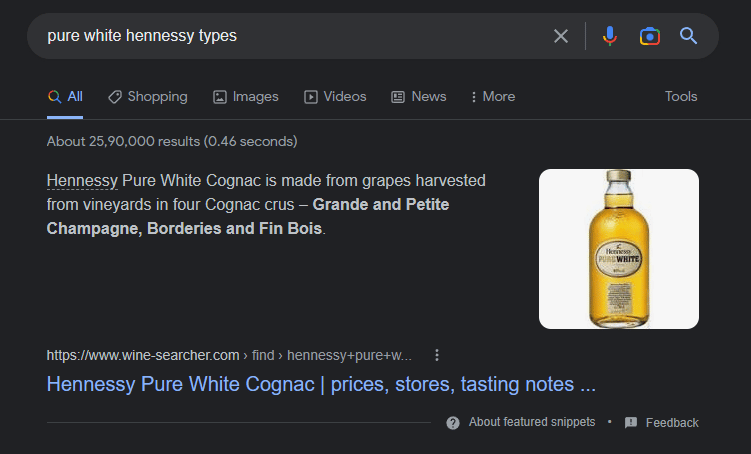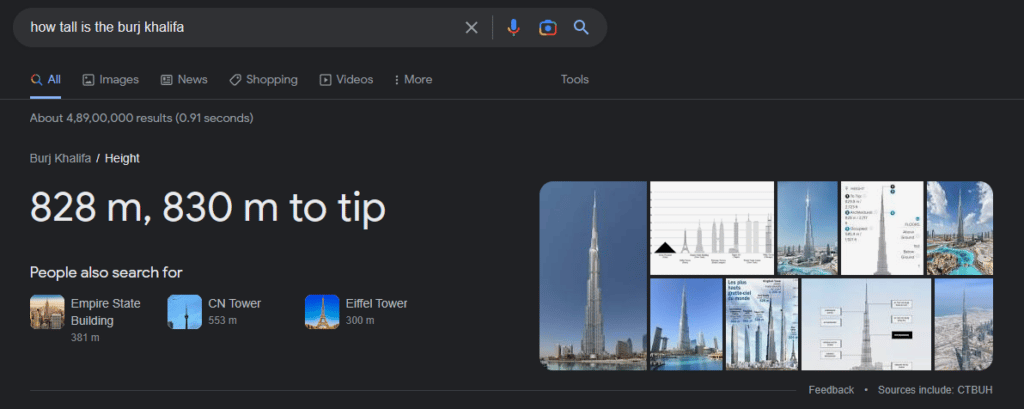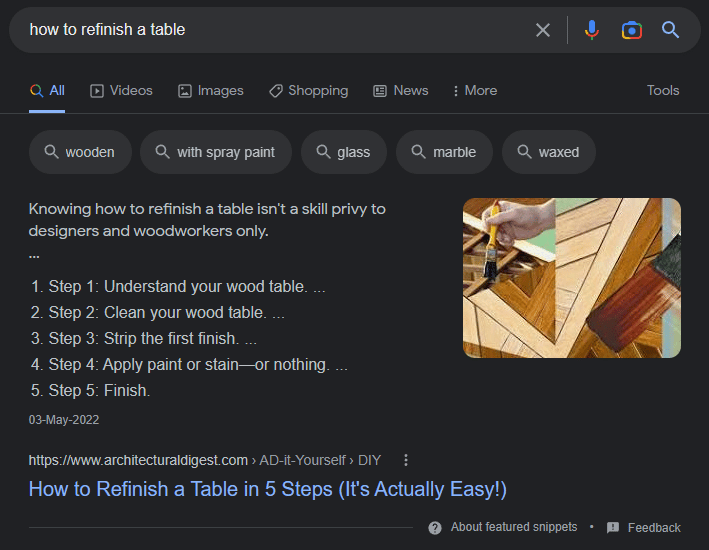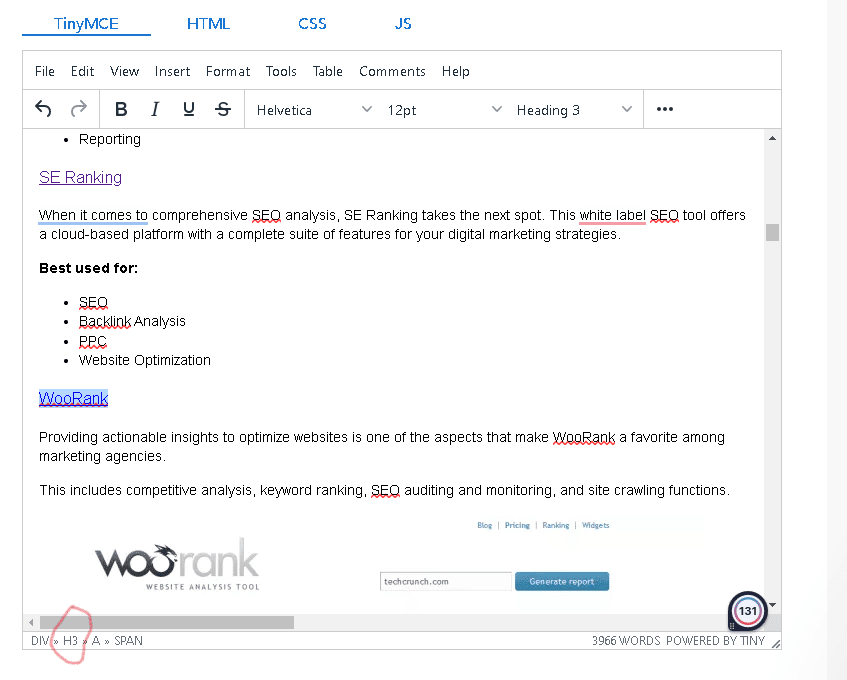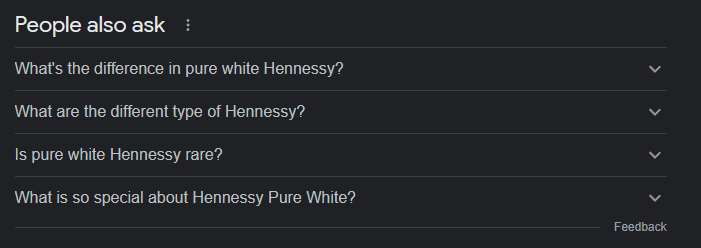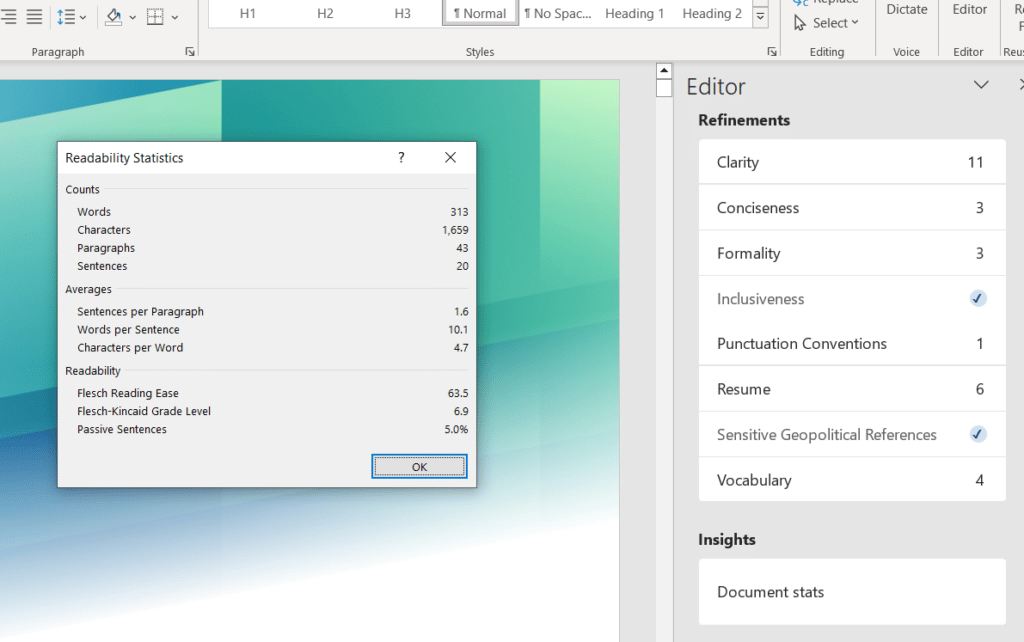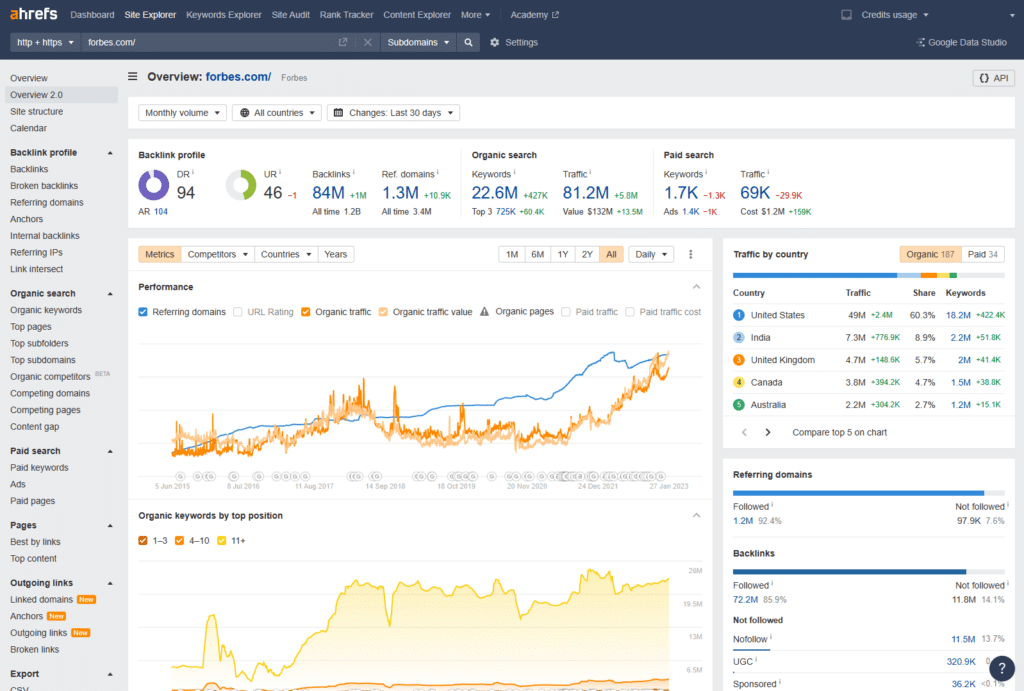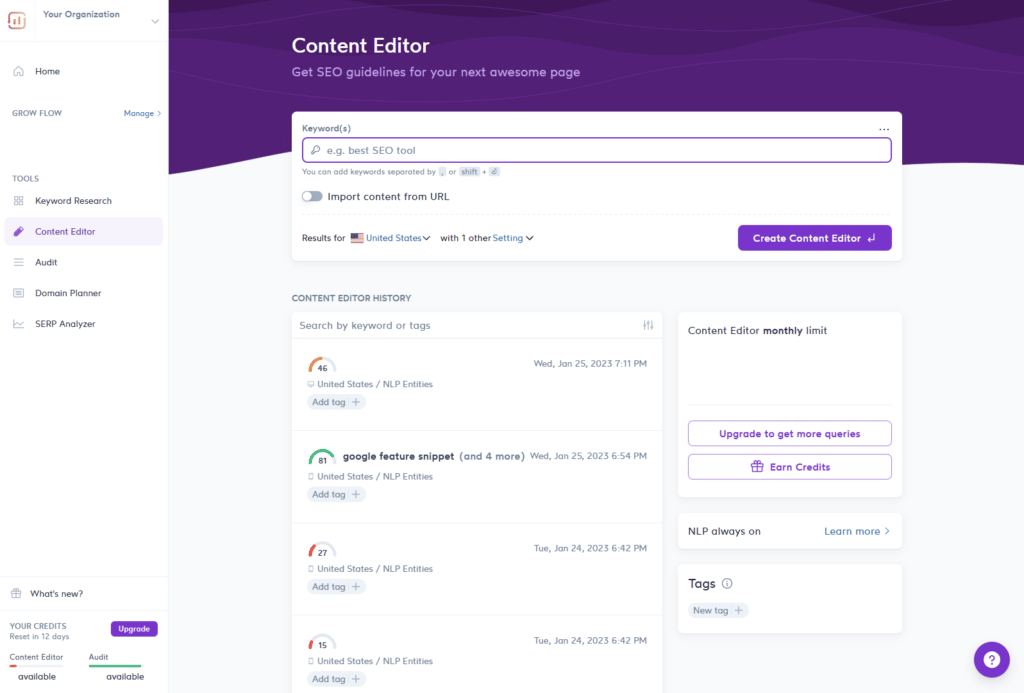The internet has made it easier for people to find answers to their questions. According to a 2022 Statista report, about 30 percent of global web traffic originates from online searches. And one of the fastest and most efficient ways to locate information is through search engines.
Google, in particular, has become the standard in this area. On average, the website receives 83.9 billion visits per month. With its ability to rank and filter data, Google can quickly provide users with the answers they are looking for. This makes it among the most reliable sources of information on the web today.
One way that Google has become even more helpful is the integration of featured snippets. What should you know about this feature, and how can it help you build your authority online?
Keep reading below to learn more.
What is a featured snippet in Google?
A featured snippet is a summary that appears as the first result on search engine results pages (SERPs). It is designed to provide quick, relevant facts to the searcher’s query. They appear at the top of SERPs and are meant to provide a better browsing experience for users.
Because Google-featured snippets are pulled from organic search results, they are considered a form of indirect SEO. If you optimize your content in the right way, it can appear as a featured snippet for related search terms. This can lead to a considerable increase in visibility and traffic to your website.
Why would you want to appear in the featured snippet?
Appearing as a Google-featured snippet can provide substantial advantages for your website. If you’re still considering whether or not you should optimize your content for featured snippets, here are a few reasons why appearing as one can be beneficial:
It’s a shortcut to the top organic position or “Position Zero”
Reaching the top spot in SERPs is always a challenge. While you can work hard to improve your website’s SEO and reach the top of the organic results, there’s no guarantee that it will happen. However, appearing as a featured snippet can be a much quicker way to the top. This is called “Position Zero,” as you appear before the first organic result.
More so, featured snippets tend to show up in related search queries. When you appear as a featured snippet, Google will not only display your content for its primary query but also for related search terms. This significantly increases the chances of your website being seen, and driving larger amounts of traffic to your site.
You’ll get the benefits of being number 1 on the Google SERP
A featured snippet takes up a considerable amount of space on the SERP. If you appear in the featured snippet, it’s like occupying two positions at once, position zero and elsewhere on page one. This gives you an edge over your competitors and more visibility for your website.
According to Backlinko, those with the number one position in Google search results get an average of 27.6 percent click-through rate (CTR), which is significantly higher than any other position. That’s because any typical browser is more likely to click on the first result when they’re looking for something.
A recent study by Engine Scout backs this information. 3,552 respondents were asked which search result they clicked on first. 35.1 percent chose the featured snippet, proving it to be the most clicked option.
CTR is vital for SEO because it affects your website’s organic rankings. With a higher CTR, you can increase the chances of potential customers finding and visiting your website. This could translate into more leads and sales for your business and a better online presence.
How featured snippets influence search and SEO
When you earn featured snippets, you can also boost your website’s authority in the eyes of Google. Think of it as a cause-and-effect situation. When your content appears in the featured snippet, it means Google has recognized it as a reliable and trustworthy source of information.
The more featured snippets you appear in, the higher your authority will be. This can result in better rankings across the board as Google continues to trust your content. Not only that, but you could also see a rise in organic traffic and even more leads for your business.
In the ever-increasing competition of SEO, featured snippets are a great opportunity to stand out. Optimizing your content the right way allows you to appear in the number one spot of SERPs and gain visibility for your website. Plus, you’ll be able to increase your website’s authority with Google, leading to better rankings and more organic traffic over time.
Thus, it’s essential to understand how to use them as part of your overall online marketing strategy. By making an effort to optimize your content for featured snippets, you can gain a competitive advantage in the online marketplace.
What’s the difference between a featured snippet and the answer box?
The answer box is often confused with the featured snippet. While they share some similarities, they are two distinct features. Answer boxes are responses pulled by Google out of its own knowledge base. This is for short answers, like “How many miles to the moon?” to which it answers with a number: 384,400 km, without a link to a source.
On the other hand, the featured snippet is an extract from a web page that appears at the top of SERPs. It’s meant to provide more in-depth information than the answer box. And to a digital marketer, this is more valuable because it provides a link to the page.
That said, the main goal of both features is to provide users with an immediate response to their queries.
What are the Different Types of Featured Snippets?
Paragraph
Also known as a Text snippet, this featured snippet is best suited for specific questions. It pulls content from the web page and displays it as a short paragraph at the top of SERPs. It’s commonly used to provide definitions, explain a concept, or offer detailed instructions. This is the most popular type of featured snippet among webmasters.
List
This type of featured snippet is best for answering questions requiring multiple pieces of information. It displays a short yet comprehensive list of details relevant to the search query.
Common examples of list featured snippets include top 10 lists, recipes, and processes. With this type of snippet, you can provide users with a summarized view of your content and make it easier for them to find the answers they need.
Table
Table featured snippets provide readers with a comprehensive view of the data found on your web page. It’s best for displaying information with two or more variables. This includes tables for financial markets, sports teams and players, and product comparison charts.
You don’t necessarily need to make a table on your web page for it to appear as a featured snippet. Google can pull out relevant data from the text and show it in a tabular format. Then, the user can get an in-depth view of the content without having to scroll through a lengthy page.
Video
There are instances where a video snippet might appear as the featured snippet for your content. This occurs when there are no written answers or if the video’s descriptions better satisfy the user’s query.
So, it’s important to tweak and optimize your videos for search engines. You can achieve this by writing an SEO-friendly title and description for each video.
What is the best way to obtain a SERP-featured snippet?
It’s unlikely for featured results to achieve their spot by chance. To get the most out of them, you need to understand the basics and apply effective optimization techniques. The following are some tips on how to obtain a featured snippet for your content:
Determine the user intent for the snippet
Search intent is a user’s goal when they type in a query. When optimizing for featured snippets, it’s essential to understand what users are looking for and how they want their queries answered.
This helps you create content that speaks to your target audience and satisfies their information needs. It’s also an excellent way to ensure that your content is comprehensive and relevant.
Identify your competitor for the snippet
Competitors owning featured snippets for the same search query as your content are valuable sources of information. You can analyze their pages and identify what makes them rank higher than yours. This helps you understand their optimization techniques and how to improve your content.
Identify gaps in the content you can use to create better content
You can gain featured snippets by looking for gaps in the content of your competitors’ pages. These are issues and topics they have neglected to address, which can be useful in creating content that stands out from the competition.
Providing comprehensive answers is essential when creating your content, as Google prefers content that offers more than just factual information. This includes adding visual elements and details to make your content appear more attractive in SERPs.
Checklist: Featured Snippet Best Practices
Use structured data (JSON-LD)
Structured data describes parts of your site to Google so it understands the context of your site sections. These help your page to appear when Google decides user intent is best served by showing a rich snippet.
For example, part of your content can be coded as How-to data, so that when a searcher uses a query looking for a step-by-step guide, pages with How-to structured data will take higher priority.
Mark up content components and provide clear information about the page’s content to search engines.
Tools for Structured Data
Google’s Structured Data Testing Tool
As mentioned earlier, structured data is a very important factor for featured snippet-optimized content. The Structured Data Testing Tool allows you to test and validate your structured data markup.
Schema App
This helps you create, deploy, and manage structured data markup for your site. Using this tool makes creating schema markups for reviews, FAQs, lists– there are more than 30 options available to ensure your website is optimized.
JSON-LD Generator
The JavaScript Object Notation for Linked Data (JSON-LD) is another way to easily create and manage structured data markups.
Use a clear and descriptive page title and meta description
Improving your page title and metadescription helps both users and Google to understand what your content is about. This improves your chances of getting a click from a searcher, as well as the likelihood that your content will be displayed as a featured snippet.
Tools for optimized metadata
SEMrush
This popular SEO tool has a Site Audit feature that detects opportunities for further optimization, which includes an analysis of your page’s metadata. It can also be used for keyword research, content gap analysis, and many other SEO features.
Screaming Frog SERP Snippet Tool
Aside from having a catchier brand name, Screaming Frog is also more focused on doing SEO audits. It’s also the cheaper option, so if you’re just looking to find optimization opportunities, this tool is the more cost-effective solution.
Optimize the page’s content for the target keyword or phrase
Of course, if your page’s content is optimized for queries that match user intent, it’s much more likely to appear as a featured snippet.
Use the standard best practices with keyword use (density, placement in headers, use of LSI) so that Google recognizes your content as useful for answering the user’s question.
Use html5 outline, old-style bullets, tables
The featured snippet exists so that Google can provide users with quick answers to their questions, without having to go to a website and scrolling for the information.
Having outlines, bullet points, tables, and nested images and content within the relevant HTML elements helps Google to find the answers faster.
For example, if you’re trying to answer a query of “UK football leagues” presenting those in list form not only helps users find the information faster, but also makes your optimized content a candidate for the featured snippet. Don’t forget to use structured data markups for “list” in these cases.
Tools to use for HTML5 Outlines, Bullets, Tables, and Images
Aside from Google’s Structured Data Testing Tool for lists and tables, also try:
Web Developer Extension
This browser extension has tools for analyzing HTML and lets users manipulate both HTML and CSS for a page.
TinyMCE
A WYSIWYG editor that’s easy to use and lets you create and edit HTML elements with structured data and HTML5 outlines on the page
Use headings
Header tags (H1, H2, etc.) organize the structure of your content for readability. It also signals to Google the page’s hierarchy of information.

Tools To Use for Headings
Yoast SEO
This plugin for WordPress suggests optimizations for headings in the content.
Table of contents WordPress plugins
Tables of content make for a better user experience if they’re not looking to read your entire article right away and are just looking for specific information. Your mileage may vary, but Heroic Table of Contents and Fixed TOC are some of the best plugins available.
Use images and other media
Images supplement the text and make the page more engaging to readers. From an SEO standpoint, this increases visitors time on page and session length, and combined with other optimizations on the page, can help Google decide your content is relevant, useful, and is the best answer to the searcher’s query.
Use internal linking
Internal links signal the page’s importance within your website’s hierarchy. This is another factor that Google considers as it looks not just at your page, but how it is structured within your entire website.
How to do keyword research to optimize for a featured snippet
When optimizing for Google-featured snippets, keyword research plays a vital role. This helps you identify relevant and related search queries to target with your content. It’s also a great way to find topic ideas and determine the best strategies for achieving featured snippets.
People Also Ask
Another feature Google uses is the People Also Ask (PAA) section. This displays a list of related queries to the user’s search term. It’s an excellent source of information for uncovering featured snippet opportunities.
You can use this to discover potential topics and brainstorm ideas on how to make your content more comprehensive and relevant.
How to create new content with featured snippets in mind
It might seem overwhelming initially, but creating content to appear as a featured snippet is doable. Here are some tips on how to optimize your content for this purpose:
Answer the question as directly and concisely as possible
Google’s search results prioritize content that can provide users with the answers they are looking for as quickly as possible. This means that your content should be able to answer their queries in the most direct and concise manner.
Avoiding long-winded sentences and paragraphs is a good practice. Keep in mind that featured snippets are meant to provide users with an immediate response, so it’s best to keep things simple. As much as possible, try to answer the question early in your content, and then elaborate later.
Tools for clear and Concise content
Hemingway
This tool suggests how your content can be simplified and made more direct to the point. Implementing these suggestions can help improve the readability of your content.
Grammarly
Aside from spelling and grammar checks, Grammarly also gives suggestions about content that helps with done, directness, an readability. It also scores your content, giving you a measurable goal to hit– try hitting a minimum score of 92.
Flesch Reading Ease (FRE)
The Flesch Kincaid Readability Score is a metric developed to measure how easy it is to read a piece of text, based on the complexity of words, sentences, and paragraphs. It works on a scale of 1-100, with 100 being very easy to read.
There are many tools online to check FRE. Microsoft Word can also show the FRE of your copy. Just go to Home > Editor > Insights > Document Stats. Aim for a score of 60-70. If you’re scoring lower than this, use simpler and shorter words, and make your sentences shorter and more direct.
Organize your article and headings, so the answer is easy to find
When optimizing for featured snippets, it’s essential to structure your content properly. This will make it easier for Google to find the answer and display it as a featured snippet.
If you’re unsure of how to organize your content for featured snippets, you can create a table of contents or an outline, or a TLDR section. This way, you can ensure that your content is well-organized and easy to read.
Answer as many questions related to the topic as you can
Featured snippets can be called up for related search queries. This means it’s essential to include information on related topics in your content.
You can create blog posts and articles that answer the questions users are likely to ask about a particular topic. Doing this increases your chances of appearing as a featured snippet for related searches.
Cite authoritative sources
You also need to create content that can be deemed reliable and credible. To do this, make sure to cite authoritative sources in your content. This will allow you to back up your claims with factual evidence and improve the quality of your content.
Including sources from reputable websites such as government institutions, universities, or non-profit organizations can help boost your credibility as well. These sources are more likely to be viewed positively by Google, thus increasing your chances of appearing as a featured snippet.
On-page optimization best practices
Following the best practices for on-page optimization can also help you get featured snippets. By optimizing for SEO, you can make your content easier to find and rank higher on SERPs. This includes the use of the following elements in your content:
Headers
Using headers and sub-headers to structure your content is an effective way to guide readers. It also helps make it easier for Google to find the answer by highlighting the relevant section of your content.
Balancing the number of headers and sub-headers is essential as well. Too many can make your content hard to read, while too few will make it difficult for Google to identify the answer.
Keyword Usage
The keywords used in your content should be relevant to the topic and user query. Avoid keyword stuffing, which can hurt your website’s rankings in SERPs.
For best results, opt for long tail keywords, as these trigger featured snippets more often than generic keywords and phrases. This is according to an Ahrefs study of 2 million featured snippets.
Improve Readability
How you structure the content can also influence its chances of appearing as a featured snippet. It is best to make your content easy to read by breaking it into short paragraphs and using bullet points where necessary. This will also help improve its readability, making it easier for users to understand the information presented in your content.
When an audience sees your content as an easy-to-follow answer to their query, they are more likely to stay and read it. This will help you increase the chances of achieving featured snippets.
Fact Check
Irrelevant or false information can hurt your chances of appearing as a featured snippet. It’s essential to double-check your facts and make sure the information you present is accurate. You can even include external sources to back up your claims and make them more credible.
While featured snippets are powerful tools for content optimization, you should also remember that ranking on SERPs is not the only benefit of creating quality content. You can also use your content to engage with and build relationships with your customers, which is essential for any business’s success.
Keep Optimizing
Featured snippets are valuable opportunities for your website to appear at the top of SERPs. However, getting featured as a snippet doesn’t guarantee that you’ll stay there. You need to provide content that is constantly optimized for featured snippets and other ranking factors.
An excellent way to maintain this is to keep track of the snippets you have earned and monitor your rankings. Google search console is an excellent tool for this. It offers data on how your website is performing, allowing you to make more informed decisions about SEO and optimization strategies.
If your position changes or slips, take it as an opportunity to go back and re-optimize your content. This way, you can increase the chances of regaining your spot as a featured snippet in SERPs.
How long does it take to get the featured snippet?
Google doesn’t provide an exact answer on how long it takes to achieve featured snippets. However, some webmasters report seeing results within a few days after optimizing their content.
It’s important to note, though, that the process can be longer in some cases. It might take weeks or even months before your content appears as a featured snippet, depending on the search query and other ranking factors.
But the most important thing to remember is that it ultimately takes time and dedication. You need to optimize your content for featured snippets continuously if you want to maintain your spot at the top of the SERP.
How to find and optimize featured snippets that you already have
Featured snippet optimization can be challenging, especially if you don’t know where to start. Fortunately, there are tools available that can help you locate and optimize featured snippets that you already have.
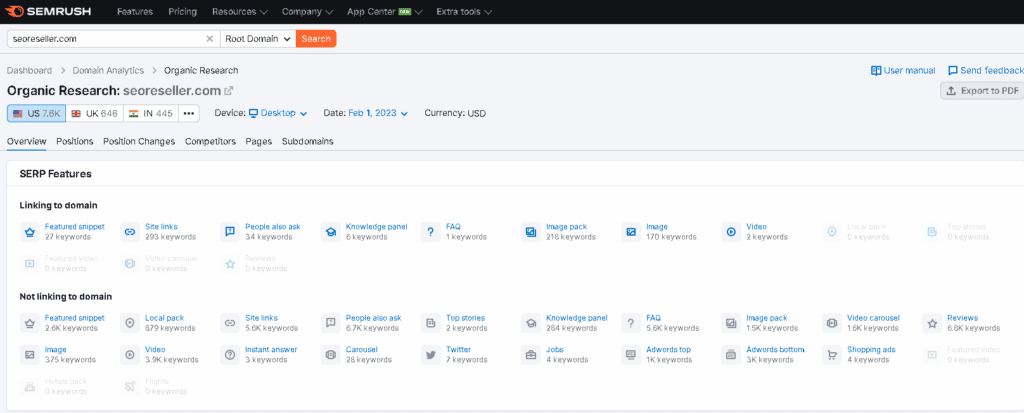
SEMRUSH SERP Features
You can use Google Search Console’s Performance Report to find snippets you already have. The report shows the featured snippets that appear for your content and how often they get displayed in SERPs. This can be useful in helping you identify the search terms for which your content currently appears as a featured snippet. You can also use it to track and measure the performance of your snippets over time.
Once you’ve identified the featured snippets that appear for your content, the next step is to optimize them. This involves looking for opportunities to improve the snippet’s copy, formatting, and visuals.
You can also optimize your content by updating it with new information, adding visual elements, and ensuring it follows all the best practices for featured snippet optimization.
Tools you can Use
Aside from Google Search Console, there are other tools you can use to help find and optimize featured snippets. Below are some of the most popular:
Keyword Research Tools
These tools allow you to identify relevant terms and phrases related to your content. Since featured snippets often appear for long-tail keywords, keyword research tools can be helpful in finding opportunities to optimize your content.
Ahrefs
Ahrefs is an SEO tool that offers users insights into their websites’ performance. It also has a content gap analysis tool that can help you identify potential featured snippet opportunities. This works by comparing your website’s content to your competitors, so you can see what topics they’re ranking for and determine how to improve yours.
SEMrush
SEMrush is another SEO tool used for keyword research. It offers a keyword difficulty tool and a featured snippet opportunity report. Like Ahrefs, it also has a content gap analysis feature allowing you to identify topics your competitors are ranking for and use them to optimize your content.
Content Optimization Tools
Finally, there are tools available that can help you optimize the content of your featured snippets. These tools allow you to create content that is more tailored to the user’s query and appears more attractive in SERPs. Some of the highly recommended tools are:
Surfer SEO
Surfer SEO is a content optimization tool that helps you create content that ranks higher in SERPs. It has various features that allow you to analyze on-page elements, compare your content to competitors, and get insights into what you need to do to optimize it.
Clearscope
This platform uses machine learning to help you create optimized content for featured snippets. It has a keyword explorer tool and an SEO writing assistant, making the optimization process more manageable. It also generates insights into your content and recommends areas to improve.
Grab that Featured Snippet Spot!
Google’s featured snippets are a powerful tool for boosting your website’s visibility in SERPs. While getting featured as a snippet isn’t easy, it’s possible with the right strategies and tools.
The above tips and tools can help you optimize your content for featured snippets more effectively.
Remember that achieving and maintaining the top spot takes time, dedication, and patience. But with the proper techniques and perseverance, you can ensure your website remains at the top of SERPs.
